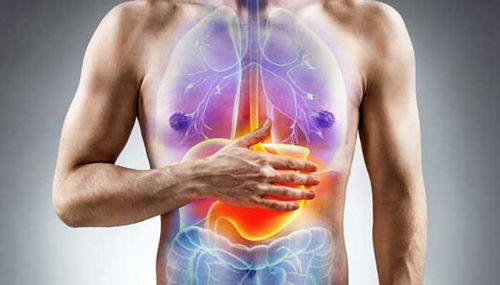The common cold (also known as nasopharyngitis, rhinopharyngitis or acute cold) is a viral infectious disease of the upper respiratory tract that mainly affects the nose and nasal mucosa. Symptoms of a cold include cough, sore throat, runny nose, and fever, which usually goes away in seven to ten days, with some symptoms lasting even longer, that is, up to three weeks. To date, research has uncovered more than 200 viruses involved in the cause of the common cold.

Upper respiratory infections affect the nasal mucosa, pharynx and throat, and sinuses. The symptoms are mostly due to the immune response to infections and are not due to tissue destruction by the viruses themselves.
There is no cure for the common cold, but symptoms can be treated. It is the most common infectious disease in humans, with an average adult catching a cold two to three times a year, and children as many as six to twelve times a year. These infections have accompanied man since antiquity.
Cold symptoms
Typical symptoms are cough, runny nose, stuffy nose and sore throat, sometimes accompanied by pain in muscle, fatigue, headache and loss of appetite. Sore throat is present in about 40 percent of infections and cough in about 50 percent, while muscle pain occurs in about half of those infected. Fever is not usually present in adults, but is common in infants and young children.
Weather
The traditional folk theory is that the common cold is associated with prolonged exposure to cold weather, such as rain or low-temperature winter weather. In fact, cooling the body (as a risk factor for colds) is controversial. Some cold-causing viruses occur more often during cold or wet, humid weather. Some believe that this is mainly due to the increased time spent indoors. However, the causes may also be related to changes in the respiratory system that cause increased sensitivity. Low humidity increases the rate of virus transmission, due to the dry air it allows small virus droplets to disperse longer and stay in the air longer.
In fact, viral respiratory infections are a constant occurrence and occur annually, especially in developed countries and in cities with high concentrations of people. These are interconnected, sometimes through daily communication allowing viruses to spread through the air. It has already been mentioned above that the cold winter months cause a faster spread, as we spend more time indoors and transmit viruses by droplets.
The following additionally contribute to the disease:
- weather effects
- high altitudes
- strong sun,
- dehydration,
- long flights,
- exhaustion, stress, exertion.
Interesting - why is the flu virus more contagious in cold winter temperatures?
At winter temperatures, viral outer coating or. the envelope hardens and thus protects the virus, as it passes from person to person, the researchers found. At warmer temperatures, however, this protective gel dissolves into a liquid form. But this liquid form is clearly not enough to protect the virus itself and so the virus loses its ability to spread from person to person.
“The results of the study opened new avenues for research into reducing flu outbreaks in winter,” said director Duane Alexander of the National Institute of Child Health and Human Development (NICHD). "Now that we understand how the flu virus is protected so that it can spread from person to person, we can work on how to prevent this defense mechanism."
Influenza viruses are usually spread from person to person through coughing and sneezing. Influenza virus infection can lead to a mild to severe form of the disease, in some cases it can even lead to death.
In October 2007, researchers working on guinea pigs found that animals were more likely to catch the flu at colder temperatures than at higher temperatures.
In this study, NIH researchers used a sophisticated magnetic resonance technique developed and already tested in the NIAAA Laboratory for Biochemistry and Biophysics, where they conducted a detailed study of how the viral outer membrane responds to changes in temperature. The virus’s outer membrane is primarily made up of molecules known as lipids, explained study author Joshua Zimmerberg, Ph.D., head of the NICHD laboratory in cell and molecular biophysics. This family of viruses also does not "mix" with water, nor with oil, fat, wax and cholesterol.
Dr. Zimmerberg and his colleagues found that at temperatures slightly above freezing, the lipid viral coating solidifies into a gel. As the temperature is 60 degrees, however, the lipid coating begins to melt.
At lower temperatures, the virus is surrounded by a protective rubber the outer envelope can withstand human-to-human travel, Dr. Zimmerberg added. In the airways at higher body temperatures, however, the coating melts to its liquid form, so the virus can infect the cells of its new host.
In spring and summer, temperatures are too high for viral membranes to form a gel. Dr. Zimmerberg said that at these temperatures, individual flu viruses dry out and weaken, which significantly helps to account for the end of the flu season.









